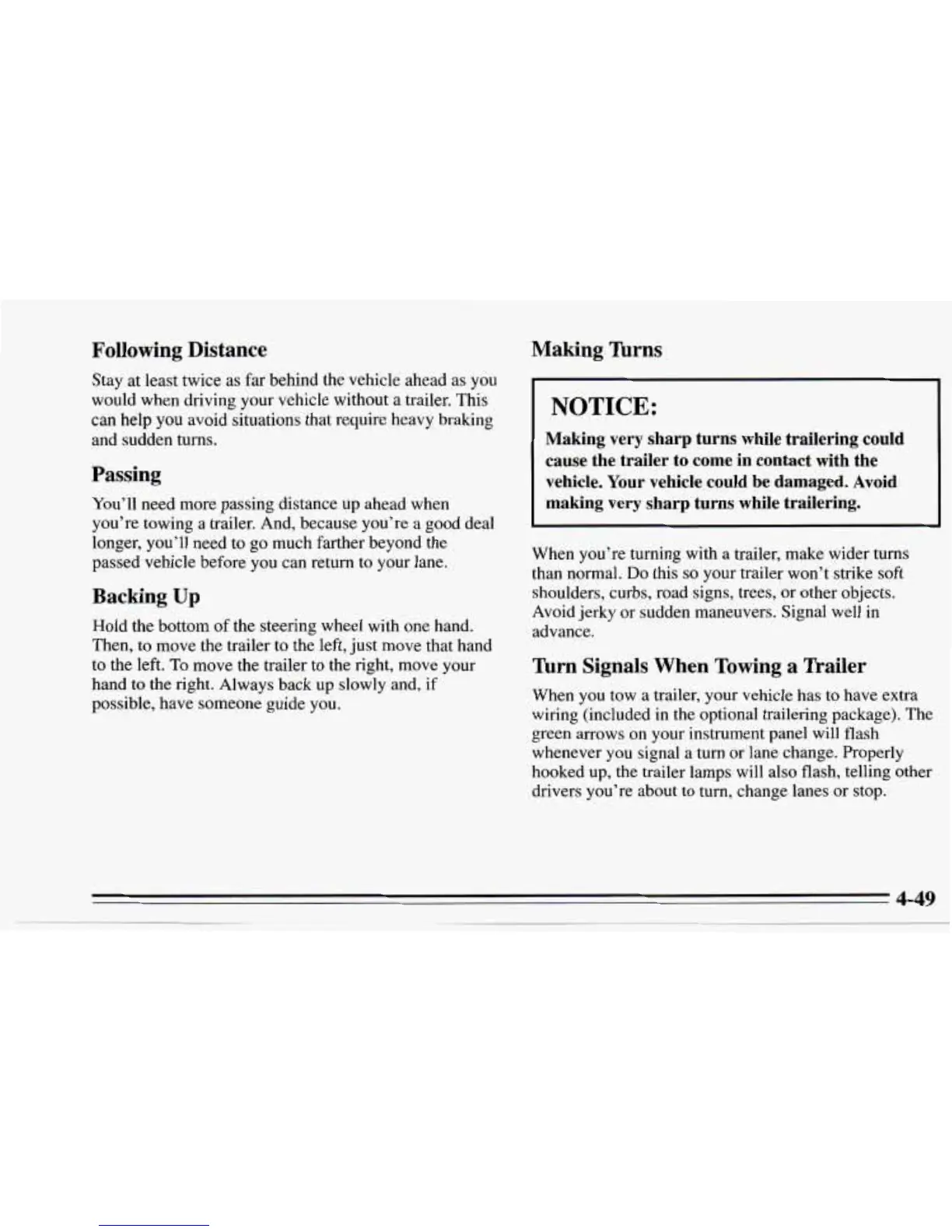Following Distance
Stay at least twice
as
far behind the vehicle ahead as
you
would when driving your vehicle without
a
trailer.
This
can
help
you avoid situations that require heavy braking
and sudden turns.
Making lhrns
Passing
You’ll need more passing distance up ahead when
you’re towing a trailer. And, because you’re a good deal
longer, you’ll need to go much farther beyond the
passed vehicle before you can return to your lane.
Backing
Up
Hold the bottom
of
the steering wheel with one hand.
Then, to move the trailer to the left, just move that hand
to the left.
To
move the trailer to the right, move
your
hand to the right. Always back up slowly and, if
possible, have someone guide you.
I
NOTICE:
Making very sharp turns while trailering could
cause the trailer to come in contact with the
vehicle.
Your
vehicle could be damaged. Avoid
making very
sharp
turns while trailering.
When you’re turning with a trailer, make wider turns
than normal.
Do
this
so
your trailer won’t strike soft
shoulders, curbs, road signs, trees, or other objects.
Avoid jerky or sudden maneuvers. Signal well in
advance.
Turn Signals When Towing a Trailer
When you tow a trailer, your vehicle has
to
have extra
wiring (included in the optional trailering package). The
green arrows on your instrument panel will flash
whenever you signal a turn or lane change. Properly
hooked up, the trailer lamps will also flash, telling other
drivers you’re about to turn, change lanes or stop.
